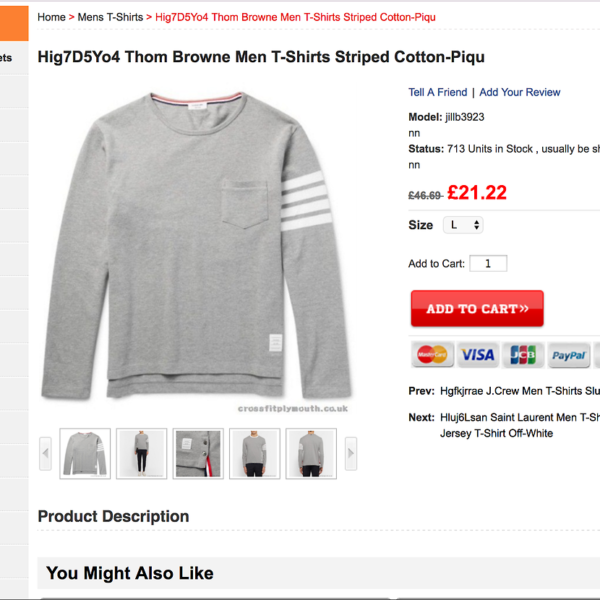
Every once in a while, we’ll get an email from a reader asking if we think a certain discount site is a scam. The internet has made it incredibly easy to search for deals – just Google the item you’re interested in, and by the time you’ve hit the tenth search results page, you’ve scoured half the world for the best prices.
It’s also never been easier for scam artists to rip off people using the same tools.
The scam is pretty simple: set up a website for much-sought-after fashion items, pretend you’re a clearance house with blowout prices, and wait for someone to submit an order. Once someone does, the people behind the site have the buyer’s credit card information, which they can either use or sell to other people. Since these scammers are often located in countries with weak governments, it’s hard to prosecute them.
So, how can you tell if a discount site is a scam?
- Look for Obvious Clues: You’ll probably know it in your gut. The layout looks janky; the writing is riddled with errors. Since these sites can be taken down at any minute by authorities, scammers don’t have the same incentives as real businesses to polish their presentation. That said, I’ve seen some nice looking scam sites … so you need something more than your gut.
- Suspicious Prices and Sizes: As the saying goes, “if it’s too good to be true.” Nobody is selling $1,000 designer jackets for $100 (sorry). Likewise, most fashion brands have pretty standard sizes (e.g. XS through XL, or the equivalents of 36 to 44). If you see unusual sizes such as XXS and XXL, particularly for high-end items, you’re probably looking at a scam site.
- Unrealistic Inventory: Since stores don’t want to get stuck with unsold inventory, they typically won’t carry more than a handful of items for any given model. So, you may see a store stock one or two Margiela leather jackets in size 38; five or six Barbour Bedales in size 40. If some site lets you checkout 1,000 pairs of Common Projects Achilles in size 9, it’s likely because they don’t have any real inventory on hand – they’re just trying to get your credit card info.
- Missing Photos and Product Descriptions: Similarly, since these sites don’t have real inventory, they’ll often have missing product descriptions (because they can’t actually describe the item). Or the information and accompanying photos are stolen from some other site. Do a reverse image search through Google to see if you can pull up the photo elsewhere. Many scam sites will take their info from Mr. Porter since they have the biggest inventory for designer goods (and thus the highest likelihood of luring someone in via Google).
- No Real Contact Information: Here’s the biggest and surest giveaway. Scam sites will never give you their real contact info for obvious reasons. On their contact page, they’ll usually just have some meaningless message field you can submit. Look for real and dependable ways to contact an actual person, such as a customer support line. If they’re selling heavily discounted designer goods, but won’t talk to anyone over the phone, you should be suspicious.
For what it’s worth, the three biggest categories I’ve seen for these things include Ralph Lauren goods, Barbour jackets, and essentially mirror sites for Mr. Porter. If you’ve been shopping online for a while, you can usually spot these because the product photos will all look familiar – stolen from other sites you’ve visited before. But you can also spot them using the tips above.
(pictured above: two scam sites we recently came across via readers)


